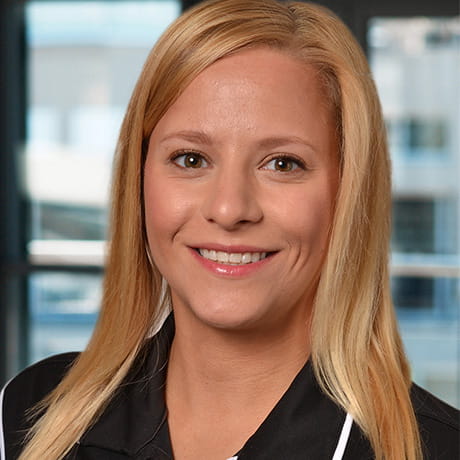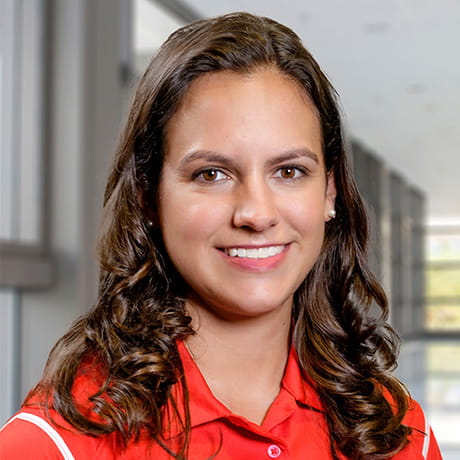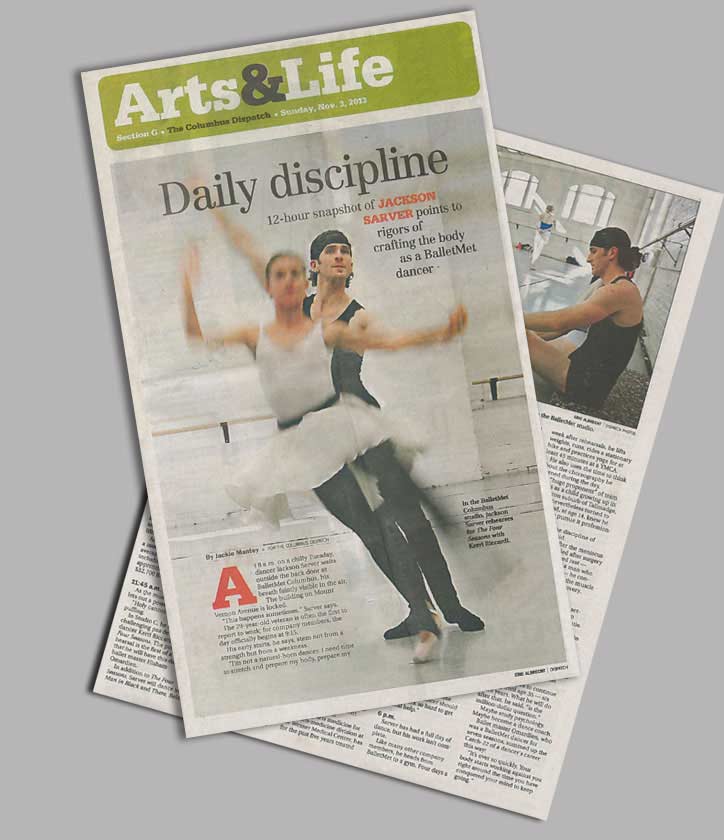Performing Arts Medicine Athletic Trainer Salary Vs Performing Arts Medicine Pt Salary
Our Performing Arts Medicine squad consists of sports medicine primary intendance physicians, orthopedic surgeons, chiropractors, physical therapists and athletic trainers experienced in dealing with the special needs of the performing creative person.
Nosotros are trained in a number of treatment techniques, including manual therapy, dance-specific exercise programs and Pilates-based rehabilitation.
We treat a wide range of performance skill levels, from recreational to high school to collegiate to professional person dancers. Our patients come up from a variety of dance operation genres, such equally ballet, contemporary, West African, liturgical and Irish gaelic. We also care for gymnasts, musicians, figure skaters and Broadway performers.
Specialists in dance medicine and rehabilitation
We are proud to exist the master medical providers for BalletMet Columbus,Ohio Land'south Department of Danceand School of Music. Our services include on-site able-bodied training, physical therapy care, pre-flavor screenings, injury checks, wellness workshops and cross grooming classes.
Our Experts Who Work With Performing Artists

Amway, Samantha

Bane, Megan

Davis-Coen, Hope

Domnisch, Deanna

Edwards, Amanda

Jonesco, Michael, Exercise

Kasmar, Tessa

Marulli, Tiffany

Souve, Kayla
Dance Wellness Screens
Dance Health Screens are exclusively designed to aid the dancer empathise more about his or her body and potential areas of further comeback to enhance performance and career longevity. The assessments are completed individually, with a summary and practice bundle specific to the results. Follow-up sessions can be purchased to take further instruction on your results and exercises. The screen evaluates:
- Balance
- Flexibility
- Leg, arm, human foot and cadre strength and range of motion
- Movement analysis
Y'all would benefit from a Trip the light fantastic toe Wellness Screen if y'all:
- Want to learn more than about your body
- Want to accost known or unknown areas or weakness or faults
- Have concerns about proper strengthening and stretching habits
- Are preparing to increase preparation or performances
- Take experienced a growth spurt
- Have concerns about generalized chronic aches and pains that come up with dancing
A Dance Health Screen is not meant for diagnosing and treating injuries. If you are concerned about an injury, come across your physician instead and possibly follow-up with formalized concrete therapy with i of our Performing Arts Medicine team members.
A Dance Wellness Screen includes an examination, results and recommendation education packet; no prescription is necessary. A 1-hr individual session is $130.
Follow-up sessions are focused on continued educational activity and guidance based on screen results (must exist used inside vi months of the initial Dance Wellness Screen). A single thirty-minute session is $lx; iii thirty-infinitesimal sessions are $160.
Introduction to trip the light fantastic toe injuries
When injuries arise, many dancers are often unsure what to practice. Important steps to follow when injury strikes include injury recognition, proper handling, understanding what factors led to the injury and a progressive render to training.
Non every hurt is an injury. Minor aches and pains typically ease once the muscles warm upwardly. Pain that persists, becomes more intense equally yous dance and is localized to a item expanse is a alarm sign to cease. If pain continues later dancing and for the remainder of the day, be cautious and initiate treatment phases. Additionally, watch for swelling at the site of injury – this is a sign of irritation and inflammation.
Overall, ever remember that pain is your body's way of warning y'all that something may be wrong. It's normal to feel an occasional ache or pain while dancing – don't exist alarmed every fourth dimension you feel a twinge. Nevertheless, when this twinge doesn't resolve and becomes progressively worse, stop before yous cause greater injury.
One time you recognize that you have an injury, initiate RICE: residue, ice, pinch and peak. Yous must rest the injured area until you can resume pain-costless dancing. Cantankerous-training is an excellent cardiovascular option to maintain fitness as long as it does not cause symptoms in the injured expanse.
While you lot are recovering, analyze the reasons why y'all may accept become injured. Causes of dance injuries tin can include abnormal anatomic alignment, poor training and technical errors – are you forcing turnout? Are your feet rolling in or overpronating? Practice you suffer from muscular imbalances?
Unfamiliar choreography or way, and ecology factors including flooring surfaces and theater temperature, can contribute to acute and overuse injuries. Farther, the female athlete triad of disordered eating, amenorrhea and low bone density/osteoporosis leads to an increased gamble for stress fracture and injury.
Education programs
Educating the dancer is the first step toward maintaining wellness, preventing injuries and career longevity. Our team develops individualized workshops and offers didactics programs for the recreational and pre-professional person dancer, including topics such as:
- Anatomy and kinesiology
- Core stability
- Cross-training
- Dance Wellness Screening
- Human foot and ankle class
- Myofascial body release
- Nutritional considerations for the performing creative person
- Onsite injury checks
- Pointe readiness screening
- Wellness and injury prevention for the boyish dancer
Our research
In partnership with Ohio Land's Sports Health & Functioning Institute, our team conducts research to promote health in dancers. Through screenings and injury tracking, our research team has admission to a diverse range of professional, collegiate, pre-professional and novice dancers across diverse genres, providing unique contributions to the field of performing arts medicine.
Making Pointe Count: Development of a dance wellness curriculum for high schoolhouse credit
The typical pre-professional educatee dances up to 31.5 hours weekly. The intensity and difficulty increases during periods of rapid growth and at that place's a common conventionalities that wellness education can help in injury prevention and career longevity. In collaboration with BalletMet Dancer'southward Core Academic Program, our team developed a six-week curriculum that immune students to receive high school credit for their dance education. In improver to the educational opportunity, information technology also provided insights for exploration of a career within performing arts exterior of existence a performer.
Multi-faceted turnout: Influence of Training Level, Measurement Method and Sex activity
Screening has become a recommended practice in dance medicine and injury surveillance tin help place causes of injury and guide preventative measures. Aspects of turnout and its measurement techniques have been examined and a human relationship between turnout and nontraumatic injuries in dancers has been established. There'due south express literature comparing turnout across level of trip the light fantastic preparation or by sexual practice. Our research examined prospective cohort data from dance wellness screens.
Our research sought to compare turnout using two measurement methods (rotation discs and floor protractor) to make up one's mind whether turnout differed past level of trip the light fantastic toe training or sex. Greater turnout angles were identified on the floor regardless of training level, when the friction of the flooring may have aided positioning. Hereafter analyses will aim to empathize the relationships between injury risk and turnout asymmetries, beyond training level and dance genre.
Plié flexibility in dancers: differences betwixt positions, measurement methods and limbs.
In order for dancers to perform plié, flexion of the foot (dorsiflexion) is necessary. Our research compared 3 different measurement methods: not-weight-bearing dorsiflexion, parallel plié, turned out plié to determine the measure method that captured the most functional ability besides as if the angle changed with age. In this written report of 126 ballet university students, we also found that dancers do not lose dorsiflexion overtime as previously institute in another written report. We also learned that the parallel plié position allows dancers to achieve greater airtight chain ankle dorsiflexion than turned out plié and may be a more accurate reflection of their functional flexibility. Therefore it may be helpful in a screening or in the clinic to measure a dancer's dorsiflexion angle in parallel plié so that you lot take a more authentic expectation of what their plié depth should return to during rehabilitation.
Iliotibial Band Tightness in Ballet and Modern Dancers
Ballet dancers train primarily in hip external rotation and abduction, while modern dancers use a variety of movement styles. Armed with the knowledge that illiotibial ring (ITB) tightness is a predisposing factor for patellofemoral pain syndrome in ballet dancers, our research sought to examine and compare the prevalence ITB tightness in both populations. The analysis found 75% of modern dancers with ITB tightness had tightness bilaterally, and 59% of ballet dancers with ITB tightness had tightness bilaterally. The proportion of dancers with ITB tightness in at least ane limb is significantly greater in modern dancers compared to ballet dancers. Results suggest that both genres of dancers may do good from supplemental interventions to promote ITB flexibility, though modernistic dancers may benefit to a greater extent.
Why choose The Ohio Country University Wexner Medical Eye for performing arts medicine?
Expertise: We provide workshops and injury checks for the fundamental Ohio trip the light fantastic community and provide regular onsite medical coverage for performing artists and shows, including:
- A Chorus Line
- Ailey Ii
- American Idiot
- BalletMet Academy
- BalletMet Columbus
- Buckeye Gymnastics
- Buckeye State Feis
- Columbus Movement
- Dance Theatre Harlem
- Flashdance the Musical
- Fort Hayes High School
- Les Miserables
- Locality 2012
- Mary Poppins
- Gym Extreme
- OSU Department of Dance
- OSU Marching Ring
- Phantom of the Opera
- Rock of Ages
- The Panthera leo King
- Wicked
- Young Frankenstein
Industry Partnerships: We have partnerships with the International Clan for Dance Medicine and Science, the American Physical Therapy Association, the Greater Columbus Arts Quango, the National Athletic Trainers Association, OhioDance, the Ohio Concrete Therapy Association and OSU Medicine and the Arts.
Inquiry: As office of our all-encompassing research study, "The Utilize of Screenings and Injury Tracking to Promote Health in Dancers," our Performing Arts Medicine inquiry team is utilizing a wealth of data nerveless over a span of years from professional person, collegiate, pre-professional and novice dancers beyond various genres to provide innovative patient intendance.
Involvement in the Performing Arts Community: Our staff is developing research initiatives with the Ohio State Wexner Medical Center'southward Labs in Life at COSI and the MAPS program within The Ohio State Wexner Medical Center's Sports Medicine program to farther progress in the science of performing arts medicine.
Patient Success
Abbey'due south Story
Abbey is an Irish gaelic dancer who has performed at the Irish Trip the light fantastic toe World Championships. While preparing for competition, she sprained her talocrural joint and sought help with our Performing Arts Medicine squad. Through the help of our experts, Abbey was able to recover in nether iii months and successfully compete in the World Championships.
Tara'southward Story
Tara has trained in many different forms of dance but has a special interest in tap trip the light fantastic toe. When she started experiencing dorsum hurting she went to Ohio Land for physical therapy with the Performing Arts Medicine team. With the help of her concrete therapist, Tara was able to get back to where she wanted to be pain free and dorsum into competitions.
Katie's Story
Katie is an Irish dancer who went in for a trip the light fantastic wellness screen at Ohio State Sports Medicine after her sister broke her foot. With the dance wellness screen, Katie was able to larn her weaknesses and work one-on-1 with our physical therapist to build force and forestall injury.
mccallmuctlandly98.blogspot.com
Source: https://wexnermedical.osu.edu/sports-medicine/treatments/performing-arts-medicine






0 Response to "Performing Arts Medicine Athletic Trainer Salary Vs Performing Arts Medicine Pt Salary"
Post a Comment